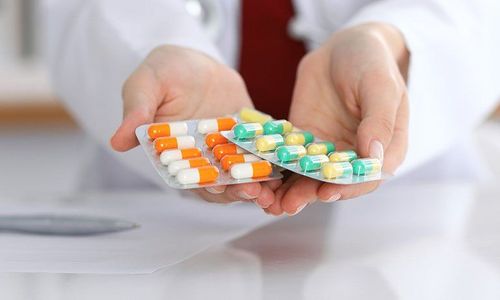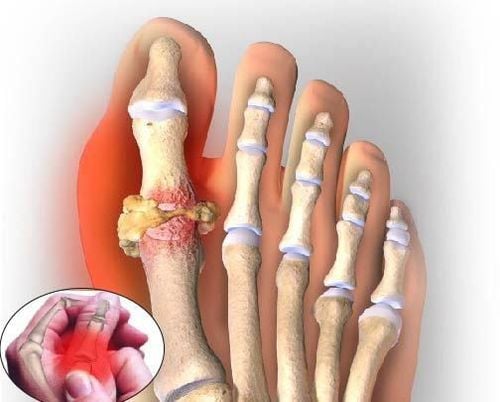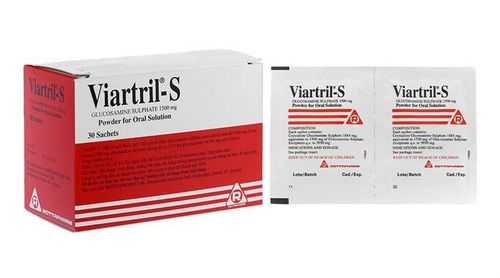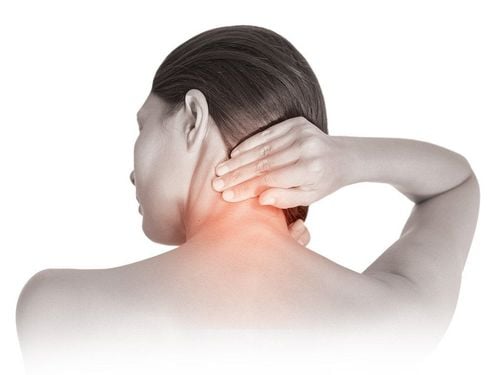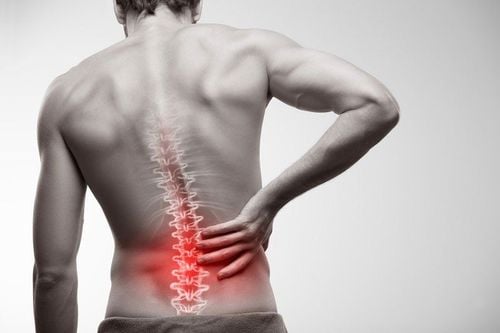This is an automatically translated article.
Steroid-containing drugs have the effect of treating inflammation such as arthritis, neuralgia... However, they also have the main effect in the metabolism of calcium, vitamins and bones. This can lead to things like: bone loss, osteoporosis, and fractures. Therefore, the use of steroids should be consulted and prescribed by a specialist to reduce the risk of drug effects on bones.
1. Osteoporosis
Osteoporosis is a condition in which bones become weak and brittle - easily breaking with a fall or even light pressure like bending over or can cause a fracture. Fractures associated with osteoporosis usually occur in the hip, wrist, or spine.
Bone is in a state of constant new change - new bone is created and old bone is destroyed. When you're young, the body creates new bone faster than breaks down old bone, resulting in increased bone mass. After the early 20s, this process slows down, and most people reach their peak bone mass by age 30. As you age, bone mass is lost faster than it was built.
Osteoporosis affects both men and women of all races. But, white women and Asian women—especially older, postmenopausal women—are most at risk. However, medication, a healthy diet and exercise can help prevent bone loss or strengthen weak bones.
The likelihood of developing osteoporosis depends in part on the bone mass gained at a young age. Peak bone mass is somewhat genetic and varies by ethnic group. The higher the peak bone mass, the more bone there is to store and the less likely you are to develop osteoporosis as you age.

Phụ nữ lớn tuổi Châu Á có nguy cơ cao mắc bệnh loãng xương
Osteoporosis usually has no symptoms in the early stages as well as symptoms of bone loss. But once the bones are weakened by osteoporosis, there will be some signs such as: back pain (may be caused by a bunch of broken vertebrae), loss of height over time, stooped back, collarbone can easily broken.
Fractures, especially in the spine or hips, are the most serious complications of osteoporosis that can lead to disability and even increase the risk of death within the first year after injury. In some cases, fractures of the spine can occur even without a fall. The bones that make up the spine can be weak and fragile leading to back pain, loss of height, and forward hunched posture.
2. Steroids
Steroids also known as corticosteroids include drugs like prednisone and cortisone that have anti-inflammatory effects. Steroids are a man-made version of the hormone normally produced by the adrenal glands, two small glands found above the kidneys. When steroids are used in higher doses than the body makes, it reduces redness and swelling (inflammation). Besides, steroids also reduce the activity of the immune system, which is considered the body's natural defense against disease and infection. This can help treat autoimmune conditions such as rheumatoid arthritis or lupus that are caused by the immune system mistakenly attacking the body.
Steroids come in different forms and the main types are:
Tablets, syrups and liquids such as prednisone Inhalers and nasal sprays, such as beclometasone and fluticasone Injectable form (given into a joint, muscle, or blood vessel) ), such as methylprednisolone Creams, lotions and gels such as hydrocortisone lotion Most steroids are taken by prescription, but there are a few (such as creams and nasal sprays) You can buy it yourself at the pharmacy.

Steroid thường được sử dụng theo sự kê đơn của bác sĩ
Steroids do not tend to cause significant side effects if they are used for a short time and at low doses. But sometimes they can cause unpleasant side effects, such as increased appetite, mood swings, and trouble sleeping. This condition is common in pill steroids. Side effects usually go away at the end of treatment. But you still need to talk to your doctor about your condition. Because stopping the prescribed course of medication can cause more unpleasant side effects.
Steroids are commonly used for: asthma, chronic obstructive pulmonary disease (COPD), hives, joint or muscle pain (such as arthritis, elbow, shoulder), neuralgia irritated or trapped (sciatica), inflammatory bowel disease (Crohn's disease), multiple sclerosis.
3. Effects of steroids on bones
Steroid drugs have the main effect in the metabolism of calcium, vitamins and bones. This can lead to bone loss, osteoporosis, and fractures. When steroid drugs are used in high doses, bone loss can occur rapidly. It's important to know that not all steroid users experience bone loss. The rate of bone loss will be different among steroid users. The cause of this difference is unknown but probably includes differences in steroid doses, the effect of certain underlying diseases on bone loss, and perhaps in some people a more genetic predisposition to the effects of these effects. use of steroid drugs. For example, postmenopausal women who use steroid medications for longer than six months have the highest risk of bone loss.
Bone loss occurs most rapidly in the first 6 months after starting oral steroids. After 12 months of steroid use, bone loss is usually slower. In addition, some people are also very concerned about the effects of inhaled steroids. Inhaled steroids are less likely to cause bone loss than oral steroids. This suggests that high-dose steroids and inhaled steroids can both be risk factors for bone loss. Steroid medications used for only a few days or applied to the skin have not been associated with bone loss.
The main effect of steroid drugs on bone is that fractures occur most commonly in the spine and ribs. Steroids (oral) equal to or more than 5 mg of an injectable drug taken daily may pose a risk of fracture. Therefore, the risk of fracture increases as the dose of steroid medication increases. Nearly 1 in 3 postmenopausal women who regularly take steroid medications will experience a spinal fracture. A steroid user is more than twice as likely to have a spinal fracture than a nonuser. The risk of fracture is reduced if the drug is stopped.
It is important to note that steroid use requires a doctor's supervision and prescription, along with an assessment of all risk factors for osteoporosis.
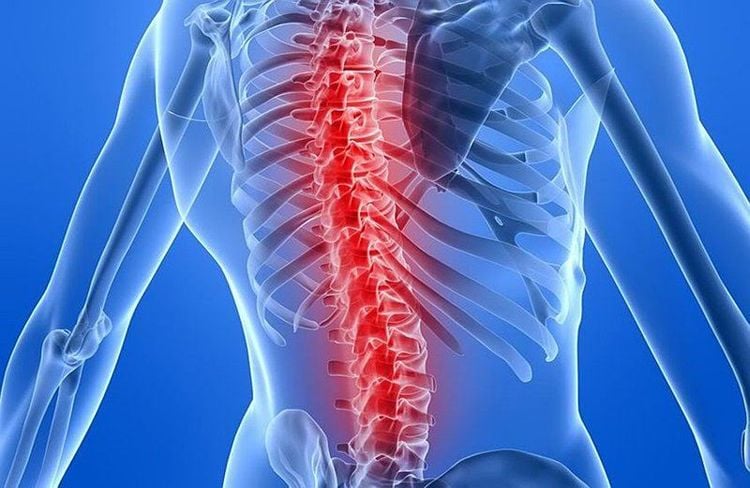
Sử dụng không đúng liều lượng thuốc có thể khiến gãy xương cột sống
4. Are there drugs that protect bones during steroid treatment?
The Food and Drug Administration (FDA) approves drugs to prevent bone loss and reduce the risk of osteoporosis-related fractures for people who regularly use steroid drugs for a long time.
5. Some Osteoporosis Prevention Measures
Prevention and treatment of osteoporosis includes:
A varied, nutrient-rich diet that includes plenty of fruits and vegetables. Choose foods to have the necessary calcium content for bones. Vitamin D supplements. Physical activity every day (eg, walking, climbing stairs or dancing...) Do not use tobacco. If you are a smoker, you should give up smoking Limit alcohol use If you are using steroids regularly, in addition to adjusting your daily routine, you should use additional drugs to avoid the risk of thinning skeletal. The decision whether to use adjuvant medication or not depends on the results of the bone mineral density (BMD) test - a test performed prior to steroid administration, the expected dose and duration of the steroid medication, and the assess risk factors other than osteoporosis. The information about the drug and how to use it should be consulted by a specialist to make the best choice.
Vinmec International General Hospital is not only an address for medical examination and treatment, but also famous for its comprehensive medical services and health care consultation.
You can directly go to Vinmec Health system nationwide to visit or contact the regional hospital hotline here for support.
References: nhs.uk, health.ny.gov




